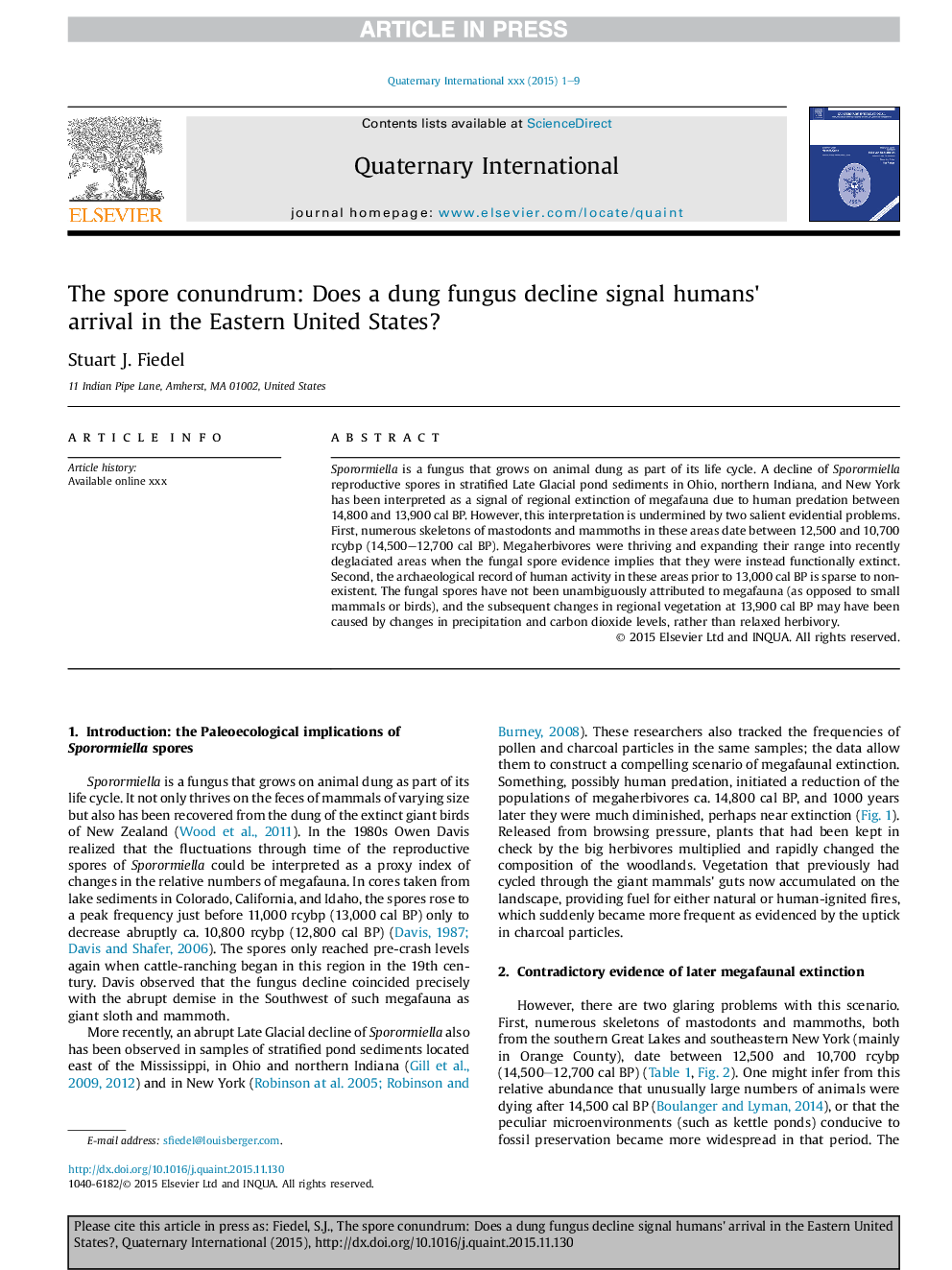| Article ID | Journal | Published Year | Pages | File Type |
|---|---|---|---|---|
| 7450645 | Quaternary International | 2018 | 9 Pages |
Abstract
Sporormiella is a fungus that grows on animal dung as part of its life cycle. A decline of Sporormiella reproductive spores in stratified Late Glacial pond sediments in Ohio, northern Indiana, and New York has been interpreted as a signal of regional extinction of megafauna due to human predation between 14,800 and 13,900Â cal BP. However, this interpretation is undermined by two salient evidential problems. First, numerous skeletons of mastodonts and mammoths in these areas date between 12,500 and 10,700 rcybp (14,500-12,700Â cal BP). Megaherbivores were thriving and expanding their range into recently deglaciated areas when the fungal spore evidence implies that they were instead functionally extinct. Second, the archaeological record of human activity in these areas prior to 13,000Â cal BP is sparse to non-existent. The fungal spores have not been unambiguously attributed to megafauna (as opposed to small mammals or birds), and the subsequent changes in regional vegetation at 13,900Â cal BP may have been caused by changes in precipitation and carbon dioxide levels, rather than relaxed herbivory.
Related Topics
Physical Sciences and Engineering
Earth and Planetary Sciences
Geology
Authors
Stuart J. Fiedel,
